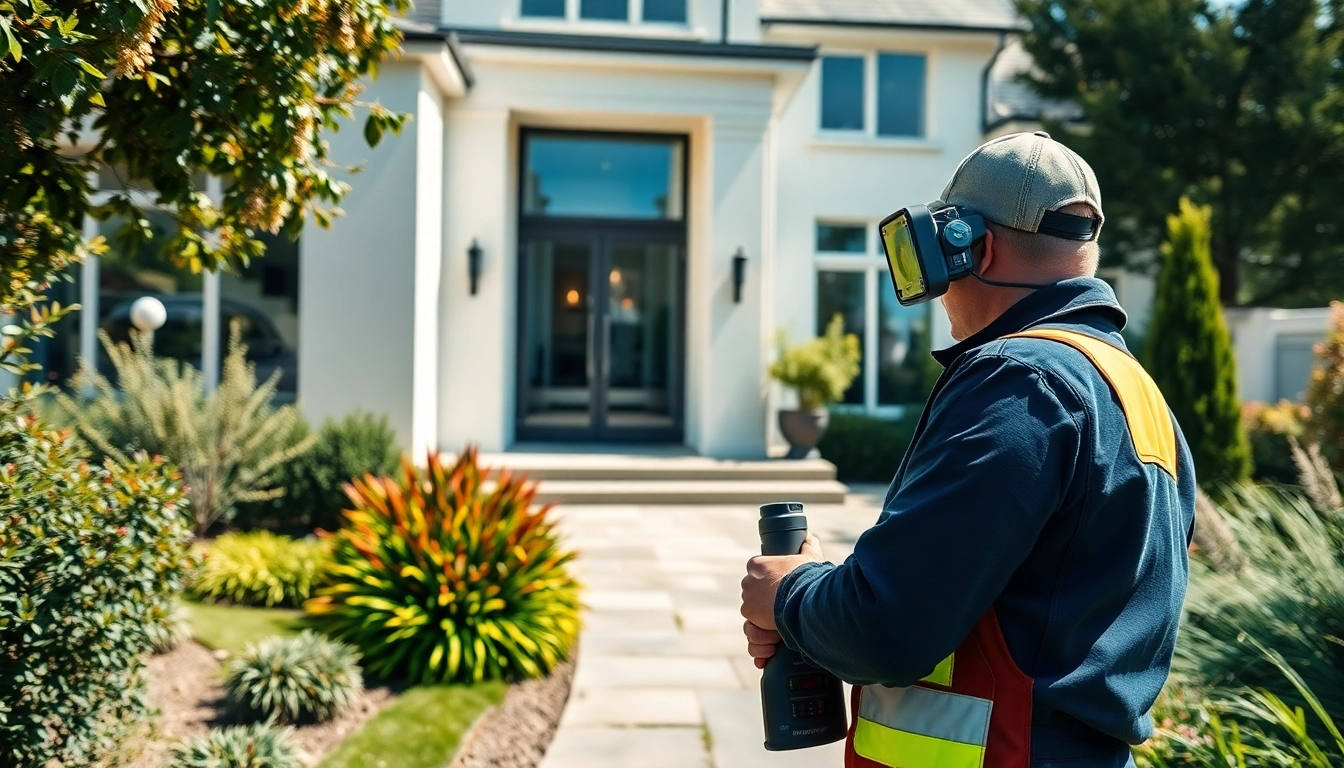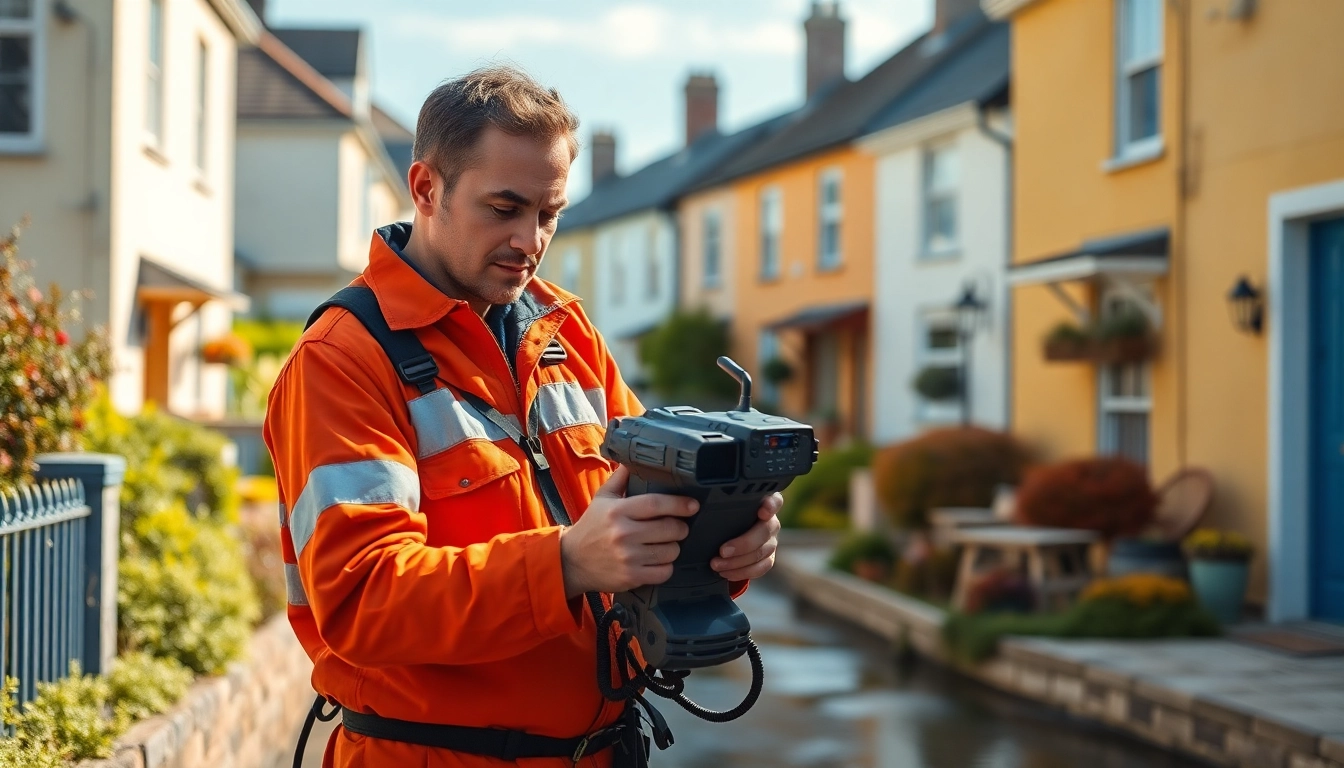Understanding Leak Detection Cornwall
What is Leak Detection?
Leak detection refers to the process of identifying and locating leaks in various systems, particularly plumbing and water supply systems. It involves using specialized tools and techniques to find leaks that may not be immediately visible to the naked eye. Accurate leak detection is crucial in preventing water damage, reducing water wastage, and saving homeowners considerable repair costs. In Cornwall, where water leaks can lead to serious structural issues and increased bills, efficient leak detection is of utmost importance. Various methods, such as thermal imaging and acoustic detection, are employed to pinpoint leaks accurately.
Importance of Leak Detection Cornwall
Leak detection is especially vital in Cornwall due to its unique geographical and climatic conditions. Frequent rains can exacerbate water leaks, leading to severe property damage if not addressed promptly. By investing in leak detection services, residents can:
- Prevent costly damage to their homes and foundations.
- Improve water conservation efforts, reducing overall bills.
- Maintain the integrity of plumbing systems, ensuring long-term usability.
- Avoid potential health issues caused by mold and mildew that can result from undetected leaks.
Utilizing Leak Detection Cornwall services can greatly assist in these preventive measures. Professionals equipped with the latest technologies and techniques can identify leaks before they become disasters.
Common Types of Water Leaks
Water leaks can manifest in various ways within residential and commercial premises. Here are some common types:
- Pipe Leaks: These often occur in hidden locations, including behind walls, and can lead to significant damage if not detected early.
- Slab Leaks: Water leaks beneath the foundation of homes can compromise structural integrity and usually require specialized detection techniques.
- Roof Leaks: Signs of roof leaks include water stains on ceilings or walls, indicating a potential breach in the roofing material.
- Appliance Leaks: Common household appliances like washing machines and dishwashers can develop leaks, which may go unnoticed until substantial damage occurs.
Signs of a Water Leak at Home
Visible Water Damage Indicators
One of the most apparent signs of a water leak is visible water damage. Homeowners should regularly inspect their property for:
- Water stains or discoloration on walls and ceilings.
- Peeling paint or wallpaper.
- Bulging or warped flooring.
- Wet spots on carpets or around baseboards.
If any of these indicators are present, it is essential to investigate further, as they often signal underlying leaks that require immediate attention.
Unusual Water Bills as Red Flags
Consistent monitoring of water bills can also serve as a crucial indicator of leaks. Homeowners experiencing a sudden increase in their water bills, despite no change in usage, should consider this a red flag for potential leaks. It is advisable to track water usage over time and compare averages to identify any significant discrepancies.
Sounds of Leaking Pipes
Another sign that indicates a possible leak is any unusual noise in plumbing systems. Homeowners may notice:
- The sound of dripping water when taps are turned off.
- Gurgling noises in drains.
- Water running sounds when no taps are on.
Listening carefully for these sounds can help in identifying the location of leaks, allowing for targeted inspections and repairs.
Advanced Techniques in Leak Detection Cornwall
Non-Destructive Testing Methods
As technology has advanced, so have the methods used for leak detection. Non-destructive testing (NDT) methods allow professionals to locate leaks without having to dig up floors or walls. Techniques like ground-penetrating radar (GPR) and acoustic leak detection enable technicians to perform their jobs efficiently and effectively, often leading to quicker resolutions with minimal disruption to homes.
Use of Thermal Imaging Technology
Thermal imaging cameras have revolutionized leak detection. These devices measure the surface temperature of walls and floors, helping identify differences in temperature that may indicate the presence of moisture. The ability to visualize heat patterns makes it easier to pinpoint leaks, often even before they become visible, allowing preventive action to be taken swiftly.
Listening Devices in Leak Detection
Listening devices, or acoustic sensors, are another innovative tool in the leak detection arsenal. These devices can pick up the sounds of leaking water within walls and underground pipes, often demonstrating pinpoint accuracy when identifying the source of the leak. This method, combined with other techniques, can provide a comprehensive approach to diagnosing water leaks in various environments.
DIY Leak Detection Tips
How to Inspect Your Home
Homeowners can take several proactive steps to inspect for leaks before they escalate:
- Start by examining your water meter; ensure no water is being used in the home and check if the meter is still moving.
- Inspect visible piping and plumbing fixtures for any signs of corrosion, drips, or water stains.
- Check under sinks and around appliances for pooling water or moisture.
- Review your home’s exterior for signs of drainage issues, such as erosion or pooling water near the foundation.
When to Call a Professional
If the initial inspection reveals significant issues or if you suspect a leak but cannot locate it, it may be time to call in the professionals. Situations like:
- Unexplained spikes in water bills over several months.
- Musty odors that suggest hidden moisture.
- Visible mold growth in damp areas.
- Persistent water stains that indicate an ongoing issue.
Professionals can use advanced techniques to locate leaks swiftly and provide solutions to rectify any damage.
Essential Tools for Homeowners
Homeowners wishing to engage in DIY leak detection may consider investing in some essential tools, including:
- Moisture meters to measure the moisture content in materials.
- Thermal imaging cameras for detecting temperature differences.
- Sound detection devices to listen for leaks in walls or floors.
- Utility knives to cut away damaged drywall or flooring safely.
With these tools, homeowners can conduct thorough inspections and identify potential leaks early.
Preventative Measures and Solutions
Regular Maintenance Tips
Preventative maintenance can save homeowners from the damage leaks can cause. Regularly scheduled inspections of plumbing systems can help identify potential issues before they become serious. Tips include:
- Checking all visible pipes for signs of wear or corrosion.
- Inspecting gutters and downspouts to ensure proper drainage away from the foundation.
- Flushing water heaters annually to prevent sediment buildup.
- Repairing any cracks in foundation walls or around windows and doors.
Upgrading Old Plumbing Systems
As systems age, they become more susceptible to leaks. Upgrading old plumbing pipes and fixtures with modern materials—such as PEX or PVC—can significantly reduce the risk of leaks. This not only helps prevent water damage but can also increase a home’s resale value by ensuring a reliable plumbing system.
Long-Term Benefits of Leak Detection Cornwall
The long-term benefits of investing in leak detection services in Cornwall are substantial. Proactive leak detection:
- Greatly reduces the risk of costly repairs associated with severe damages.
- Conserves water, contributing positively to environmental efforts.
- Enhances property value with a well-maintained plumbing infrastructure.
- Offers peace of mind, knowing one’s home is safe from hidden moisture issues.
In conclusion, ensuring proper leak detection and maintenance not only protects property values but also promotes overall health and safety in homes. Embracing these practices can save Cornwall residents both money and stress in the long run.



